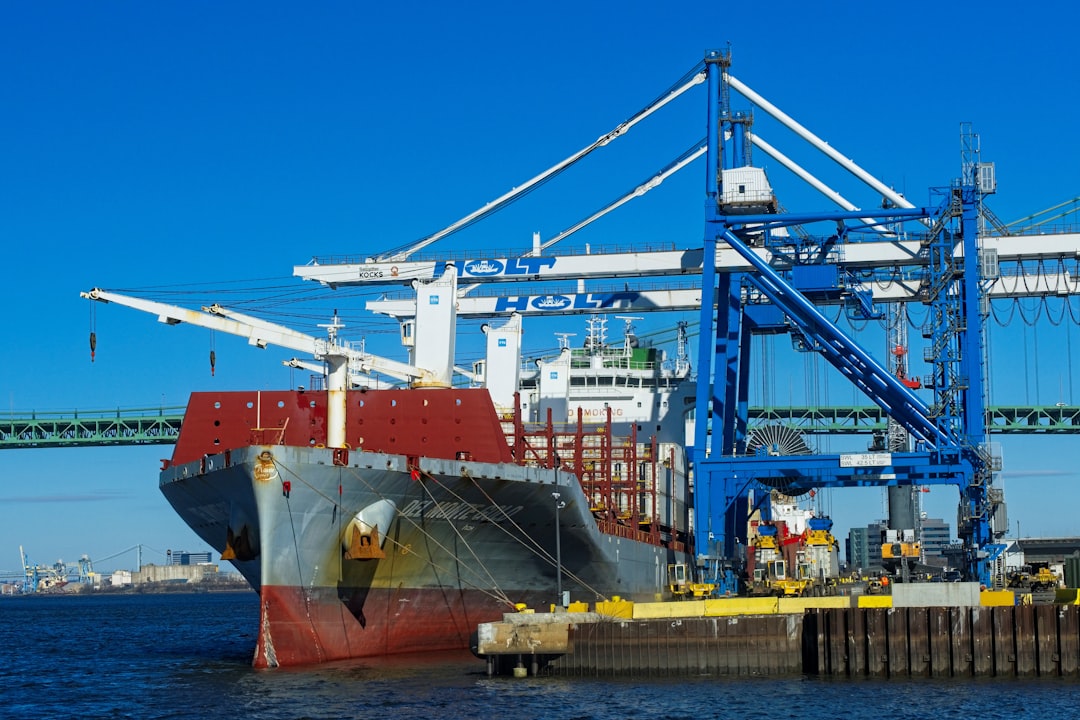In today’s globally interconnected world, efficient logistics are no longer a luxury but a necessity for businesses of all sizes. Successfully navigating the complexities of moving goods requires a deep understanding of both maritime and land logistics, and how to seamlessly integrate them. This comprehensive guide delves into key strategies to optimize your supply chain and gain a competitive edge.
1. Optimizing Multimodal Transportation for Efficiency
Multimodal transportation, the strategic use of various transport modes (sea, rail, road, air) within a single shipment, is crucial for efficient global logistics. Choosing the right combination depends on factors like distance, cost, speed, and the nature of the goods. For instance, shipping goods across oceans via container ships is cost-effective for large volumes, but requires efficient land-based transportation for last-mile delivery. Effective multimodal transport requires careful planning, including:
- Route optimization: Utilizing advanced software and data analytics to identify the fastest and most cost-effective routes, considering factors like traffic, weather, and port congestion.
- Carrier selection: Choosing reliable and reputable carriers for each leg of the journey, ensuring seamless handovers and minimizing delays.
- Documentation management: Streamlining customs procedures and documentation to avoid delays and penalties. This includes accurate and timely preparation of bills of lading, commercial invoices, and other necessary paperwork.
- Real-time tracking and monitoring: Utilizing technology to track shipments in real-time, enabling proactive problem-solving and minimizing disruptions.
2. Strategic Inventory Management: Balancing Supply and Demand
Effective inventory management is critical for minimizing storage costs, preventing stockouts, and avoiding excess inventory. This requires a sophisticated approach incorporating both forecasting and real-time data analysis. For businesses heavily reliant on maritime transport, accurate demand forecasting is especially crucial, as lead times can be significantly longer. Strategies include:
- Demand forecasting: Utilizing historical data, market trends, and seasonality to predict future demand and optimize inventory levels.
- Just-in-time (JIT) inventory: Minimizing inventory holding costs by receiving materials only when needed, reducing warehousing space and associated costs. This strategy requires precise coordination between maritime and land logistics.
- Safety stock management: Maintaining a buffer stock to mitigate unforeseen delays or disruptions in the supply chain, particularly important given the inherent variability in maritime transport.
- Warehouse optimization: Strategically locating warehouses to minimize transportation costs and improve delivery times. This includes considering proximity to ports and major transportation hubs.
3. Mitigating Risks in Maritime and Land Logistics
The global logistics landscape is rife with potential risks, including port congestion, natural disasters, geopolitical instability, and theft. Proactive risk management is crucial for minimizing disruptions and protecting your business. Key strategies include:
- Diversification of suppliers and routes: Reducing reliance on single suppliers or transportation routes to mitigate the impact of disruptions.
- Insurance and risk transfer: Obtaining appropriate insurance coverage to protect against potential losses from damage, theft, or delays.
- Contingency planning: Developing backup plans to address potential disruptions, such as alternative transportation routes or temporary storage solutions.
- Real-time monitoring and communication: Utilizing technology to monitor shipments and communicate effectively with stakeholders to address issues promptly.
- Security measures: Implementing robust security measures to protect goods from theft or damage throughout the supply chain.
4. Leveraging Technology for Enhanced Logistics Visibility
Technology plays a crucial role in optimizing both maritime and land logistics. Utilizing advanced systems provides real-time visibility, improved efficiency, and enhanced decision-making. Key technological advancements include:
- GPS tracking: Monitoring the location and status of shipments in real-time.
- Transportation Management Systems (TMS): Automating and optimizing transportation planning, scheduling, and execution.
- Warehouse Management Systems (WMS): Managing inventory, tracking goods, and optimizing warehouse operations.
- Blockchain technology: Enhancing transparency and security by providing an immutable record of transactions and shipments.
- Data analytics: Utilizing data to identify trends, predict demand, and optimize logistics processes.
5. Building Strong Relationships with Logistics Partners
Successful global logistics relies heavily on collaboration and strong relationships with various partners, including freight forwarders, shipping lines, trucking companies, and customs brokers. Building trust and open communication are vital for ensuring smooth operations. Key strategies include:
- Selecting reliable and reputable partners: Conducting thorough due diligence to ensure partners meet your requirements and maintain high standards.
- Establishing clear communication channels: Maintaining open and transparent communication to address issues promptly and efficiently.
- Developing collaborative relationships: Working closely with partners to identify and implement improvements in the supply chain.
- Negotiating favorable contracts: Securing competitive rates and service levels through effective contract negotiations.
- Regular performance reviews: Evaluating partner performance and identifying areas for improvement.
By implementing these strategies, businesses can create a seamless synergy between maritime and land logistics, optimizing their supply chains, reducing costs, and enhancing their competitiveness in the global marketplace.
Tags: maritime logistics, land logistics, supply chain management, multimodal transport, logistics optimization




